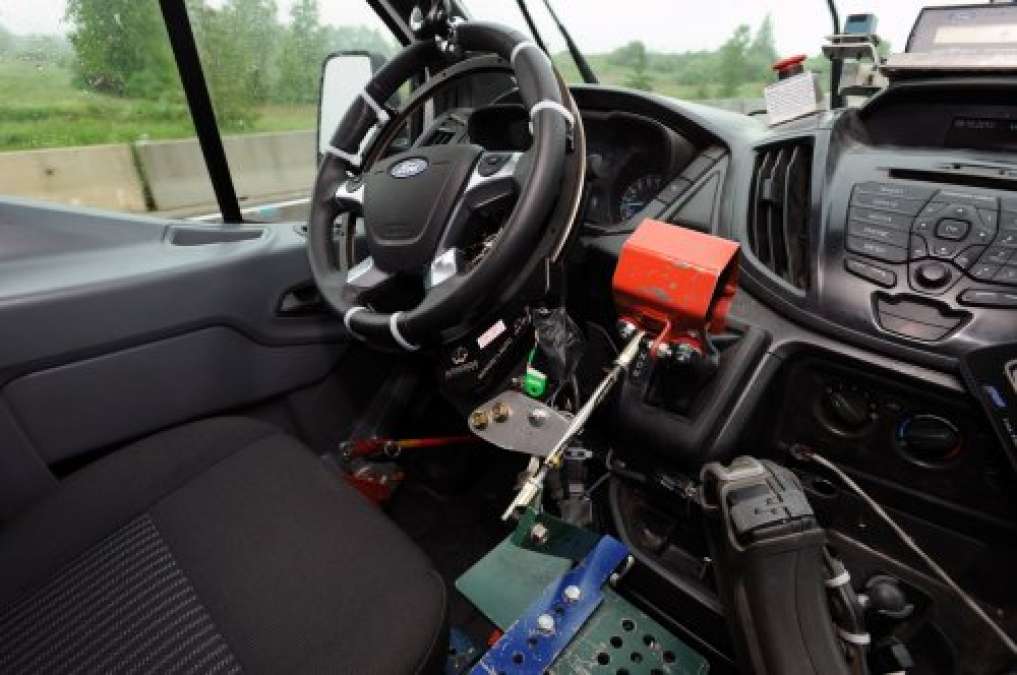Despite the many warnings from Hollywood about the dangers of robotic technology, Ford engineers have developed the industry's first robotic test driving program.
The program is in use at the company's Michigan Proving Grounds in Romeo. It is designed to increase the frequency and duration of stress testing on Ford's commercial vehicles like the Transit series of vans.
"Some of the tests we do on our commercial trucks for North America are so strenuous that we limit the exposure time for human drivers," says Dave Payne, manager, vehicle development operations. "The challenge is completing testing to meet vehicle development time lines while keeping our drivers comfortable.
"Robotic testing allows us to do both," he says. "We accelerate durability testing while simultaneously increasing the productivity of our other programs by redeploying drivers to those areas, such as noise level and vehicle dynamics testing."
The robotic control module is designed to be installed onto the test vehicle as a retrofit, without requiring any modifications to the vehicle itself. It mounts to the steering column and pedals to control acceleration, braking, and steering. It is programmed with a pre-set course and vehicle-mounted cameras and GPS systems send feedback to a central control room where technicians monitor progress. These techs can know where the test vehicle is at all times, to within one inch. A cutoff from the control room allows engineers to shut down the vehicle should it stray from its course or suffer any type of failure. On-vehicle sensors will also stop the vehicle automatically if any other object strays in front of the vehicle (pedestrian, animal, other vehicles).
The torture tests that Ford uses on its course have unassuming names like Silver Creek, Power Hop Hill, and Curb Your Enthusiasm. These tests can compress ten years of daily driving abuse into just a few hundred yards. Surfaces like cobblestones, broken concrete, metal grates, rough gravel, mud puts, overzealous speed bumps, and more await the robots as they guide their vehicles along their routes.
The software and components for the new Ford robotics systems were designed and manufactured by Autonomous Solutions in Utah. The company develops robotic solutions for military and industrial use.
Here is video of the robot driver in action:





